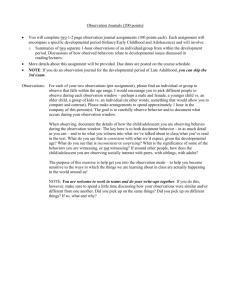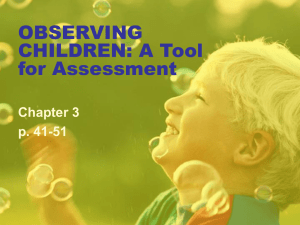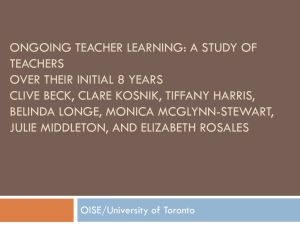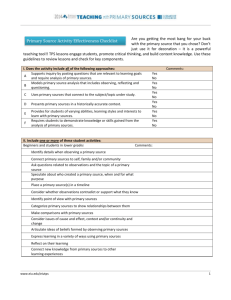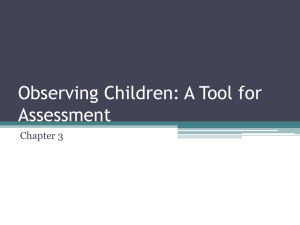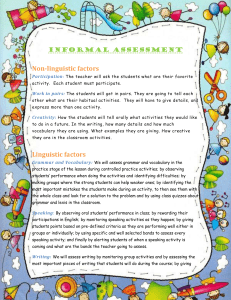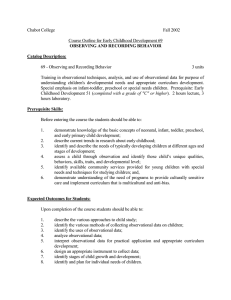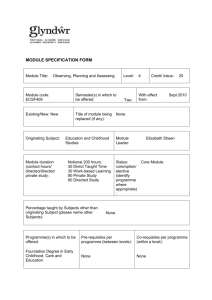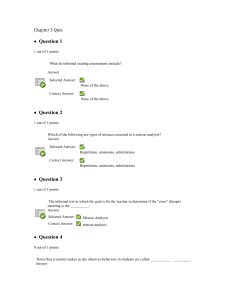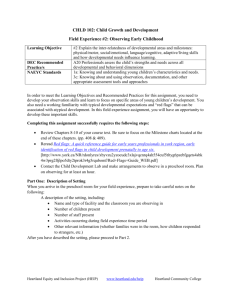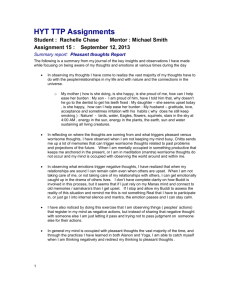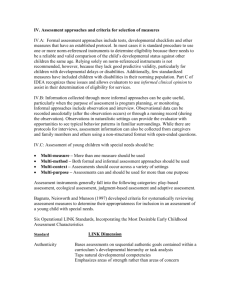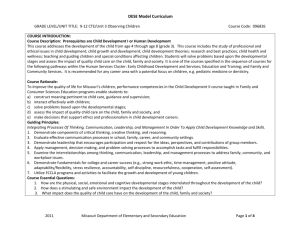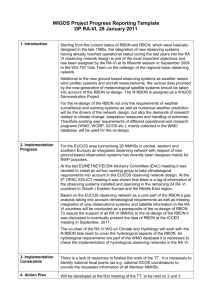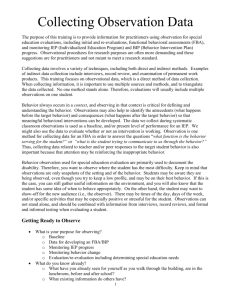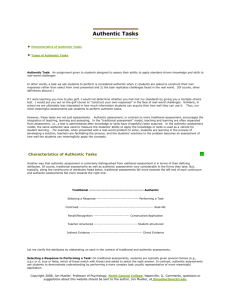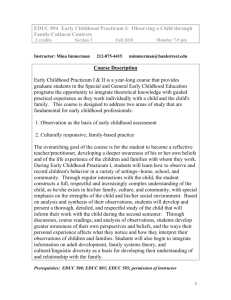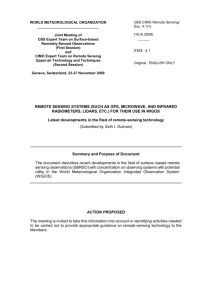Observing and Assessing Young Children article
advertisement
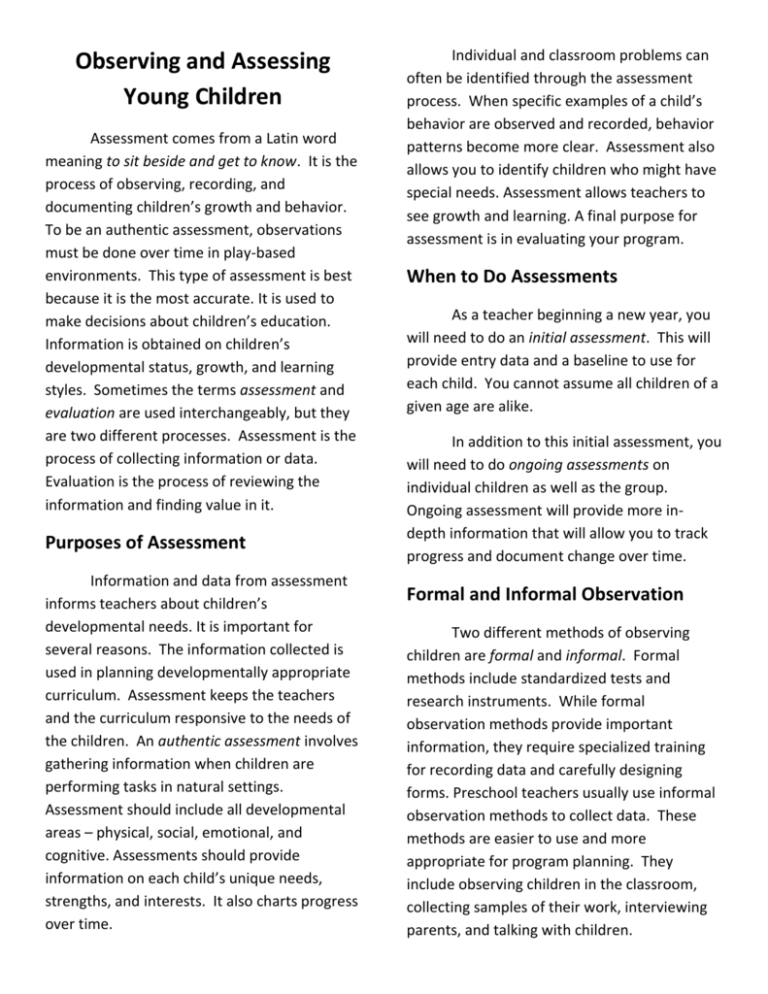
Observing and Assessing Young Children Assessment comes from a Latin word meaning to sit beside and get to know. It is the process of observing, recording, and documenting children’s growth and behavior. To be an authentic assessment, observations must be done over time in play-based environments. This type of assessment is best because it is the most accurate. It is used to make decisions about children’s education. Information is obtained on children’s developmental status, growth, and learning styles. Sometimes the terms assessment and evaluation are used interchangeably, but they are two different processes. Assessment is the process of collecting information or data. Evaluation is the process of reviewing the information and finding value in it. Purposes of Assessment Information and data from assessment informs teachers about children’s developmental needs. It is important for several reasons. The information collected is used in planning developmentally appropriate curriculum. Assessment keeps the teachers and the curriculum responsive to the needs of the children. An authentic assessment involves gathering information when children are performing tasks in natural settings. Assessment should include all developmental areas – physical, social, emotional, and cognitive. Assessments should provide information on each child’s unique needs, strengths, and interests. It also charts progress over time. Individual and classroom problems can often be identified through the assessment process. When specific examples of a child’s behavior are observed and recorded, behavior patterns become more clear. Assessment also allows you to identify children who might have special needs. Assessment allows teachers to see growth and learning. A final purpose for assessment is in evaluating your program. When to Do Assessments As a teacher beginning a new year, you will need to do an initial assessment. This will provide entry data and a baseline to use for each child. You cannot assume all children of a given age are alike. In addition to this initial assessment, you will need to do ongoing assessments on individual children as well as the group. Ongoing assessment will provide more indepth information that will allow you to track progress and document change over time. Formal and Informal Observation Two different methods of observing children are formal and informal. Formal methods include standardized tests and research instruments. While formal observation methods provide important information, they require specialized training for recording data and carefully designing forms. Preschool teachers usually use informal observation methods to collect data. These methods are easier to use and more appropriate for program planning. They include observing children in the classroom, collecting samples of their work, interviewing parents, and talking with children. After reading the article “Observing and Assessing Young Children” answer the following questions: 1. What is the origin of the word assessment? 2. What is the purpose of assessment? 3. What does authentic assessment mean? Why is this form of assessment best for us to use in the preschool? 4. Explain initial assessment and ongoing assessment. 5. What is the difference between formal and informal assessment?
